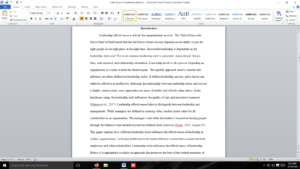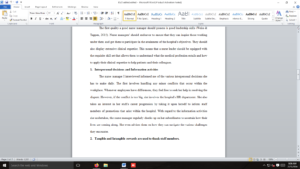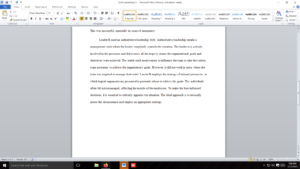Styles of Leadership
Research Paper-Styles of Leadership
Paper will follow APA formatting which consist of the following:
- Arial or Times Roman
- 12-font
- Cover and Reference page
- 5 -6 Double-spaced pages; not including the cover and reference pages
Presentation
- No more than 10 slides
- Each slide must contain an image which offers insight to the material in the slide
- Presenter engages the audience
- Must not repeat points
Answer previewtransformational leadership has high popularity in theory and practice, provoking different stakeholders (Bass & Riggio, 2006). The difference between the job centered leaders and the employee-centered leader is a fundamental aspect of the ideal leadership traits. An effective leader must find a harmonious balance between the team’s goals and the interest of those they lead. One of the key interests of employees is career success, which, in return, a major driver of organizational success (Hitt et al., 2018). This is achieved through the level of commitment. There are three types of commitment: affective, normative, and continuance. Affective commitment measures the employee’s perception of attachment to the organization. Normative commitment explains how much an employee would perceive they must stay in the organization. The continuation commitment is related to employee believe that leaving the organization would be costly. The use of relationship-oriented leadership causes a significant positive value in normative and affective commitment but no difference in continuance commitment[1956 Words]

Styles of Leadership



